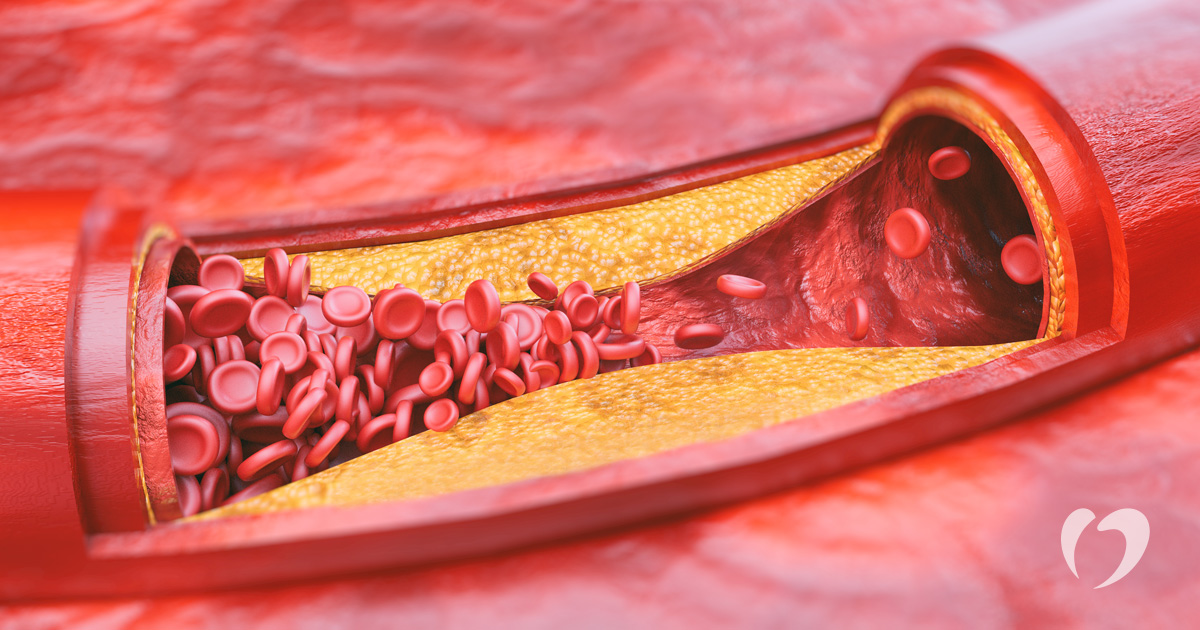Atherosclerosis: hardening of the arteries

Atherosclerosis is a condition affecting the arteries, which are responsible for carrying oxygen-rich blood from your heart to your body. Atherosclerosis involves the buildup of fats, cholesterol, and other substances on the artery walls. The buildup is called plaque, and it can restrict blood flow in the body.
Reduced blood flow through your arteries means less oxygen supplied to the organs and tissue throughout the body, which impacts how well they function. Plaque that builds up in the arteries may also burst and result in a blood clot.
Buildup of plaque in the arteries can occur anywhere in the body, and it can lead to many other health conditions, such as heart attack, stroke, coronary heart disease, peripheral artery disease, or chronic kidney disease.
Causes
Atherosclerosis is a progressive disease that may begin as early as childhood and impacts different people at different ages. While the exact cause is not known, studies suggest that plaque buildup begins when the inner lining of the arteries is damaged by one of several factors, including smoking, high cholesterol, high blood pressure, or high blood sugar.
Symptoms and Diagnosis
Because atherosclerosis develops gradually over time, most patients will not experience any symptoms in the early stages of the disease. Symptoms typically begin when an artery has narrowed so much that not enough blood gets to your organs and tissues.
When symptoms do occur, they will vary based on the location of the narrowed arteries. Symptoms may include chest pain, numbness or weakness in arms or legs, slurred speech, temporary loss of vision in one eye, leg pain when walking, high blood pressure, or kidney failure.
If you experience any symptoms that could be related to atherosclerosis, see your doctor as soon as possible. There are many diagnostic tests your doctor may run to look for signs of atherosclerosis, including blood tests, electrocardiogram (EKG), chest x-ray, echocardiogram, CT scan, a stress test, or an angiogram. They may also run an ankle brachial index, which measures the blood pressure in your arm compared to the blood pressure in your ankle to determine how well blood is flowing through your arteries.
Treatment
As with many other heart conditions, treatment for atherosclerosis may include a combination of lifestyle changes, medications, and procedures.
Recommended lifestyle changes to both prevent and treat atherosclerosis include eating a heart-healthy diet, getting regular exercise, quitting smoking, losing weight, and reducing stress. Medications may include any of the following:
-
Cholesterol drugs to lower LDL cholesterol
-
Anti-platelet medications to reduce the chances of platelets clumping in the arteries to form a clot
-
Beta blockers to reduce heart rate and blood pressure
-
ACE inhibitors to lower blood pressure and reduce the risk of heart attack
-
Calcium channel blockers to lower blood pressure
-
Diuretics (water pills) to lower blood pressure
-
Other medications to control contributing factors or symptoms, such as diabetes, inflammation, or leg pain
In cases of severe atherosclerosis, a medical procedure may be required. Options include a coronary angioplasty to open narrowed arteries and placement of a stent to keep them open, coronary artery bypass grafting to go around the narrowed arteries, or an endarterectomy to surgically remove plaque from the arteries.
If you have a family history of atherosclerosis, are a smoker, have high blood pressure, or have high cholesterol, contact the Oklahoma Heart Hospital today to schedule an appointment to discuss your risk factors for atherosclerosis.
